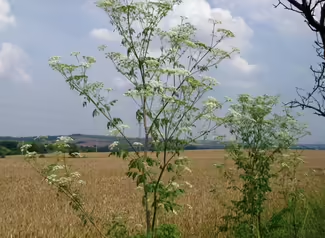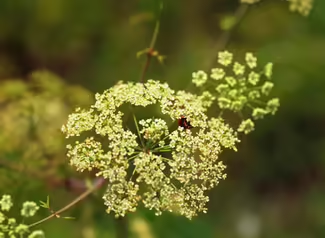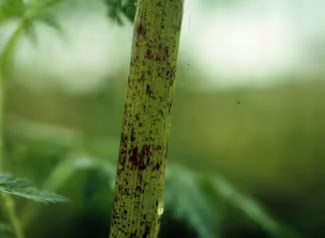
Invasive Poison Hemlock
Poison hemlock (Conium maculatum) is a non-native, but established, invasive plant in the carrot family. It can form very dense patches, particularly in areas with some soil disturbance, but it is a high concern because of the serious health risks it poses. All parts of the poison hemlock plant are highly poisonous and ingesting even a small amount can be fatal. Poisoning may also occur via inhalation of smoke when poison hemlock plants are burned or when sap comes into contact with cuts or abrasions on skin. Contact dermatitis is a possibility as well, resulting in rashes and burns, though this is typically more severe with other carrot species, such as wild parsnip or giant hogweed. Recently some extreme cases of rashes from poison hemlock contact have been reported in Illinois. Poison hemlock is also highly poisonous to livestock.
If you think you may have been exposed to poison hemlock, particularly through ingestion or inhalation, call 911 or the Illinois Poison Center Helpline (1-800-222-1222) or seek medical assistance.
Download the printable poison hemlock information sheet
Poison Hemlock In Illinois Cicuta Venenosa En Illinois
History of Poison Hemlock
Poison Hemlock was introduced as a garden plant in the 1800s and is now found across most of the United States. It is native to Europe, northern Africa, and western Asia.
Regulation of Poison Hemlock
The Illinois Exotic Weed Act lists poison hemlock as an invasive plant. It cannot be sold or distributed in Illinois.

First-year plants of poison hemlock are large rosettes. Second-year plants form tall flowering stalks, reaching heights of 4 to 10 feet. Leaves are compound and finely dissected and fern-like in appearance. Leaves are generally triangular. The leaves at the base are typically larger than the leaves arising from the flowering stem. The flowering stem is smooth with no hairs or bristles. Stems are thick, green, and typically blotched with purple colors. A waxy coating covers the stem. Small, creamy white flowers occur in small clusters that are 2 to 5 inches in diameter with loose flat tops. Usually, many flower clusters occur on a single plant. Flowering occurs in early summer. After flowering and seed formation, poison hemlock plants will slowly turn brown and die back.
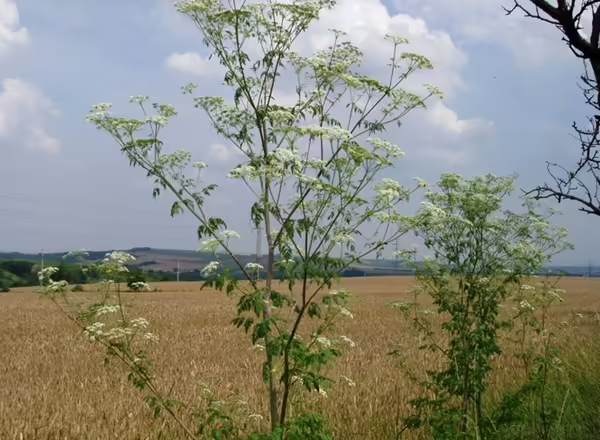
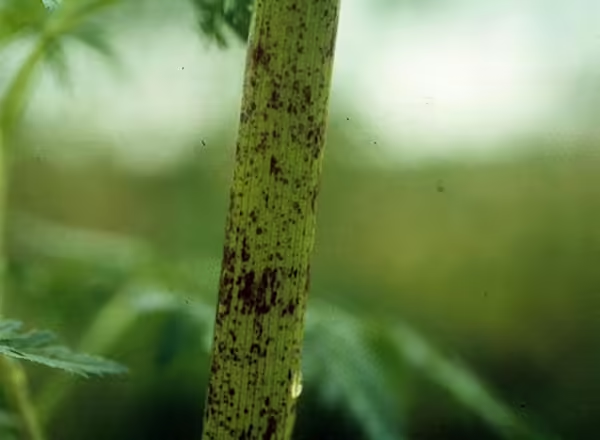
This species does not generally cause skin irritation, but all parts of the plant are extremely poisonous if ingested. Take precautions during any treatment.
- Mechanical: Plants may be pulled if it is possible to remove the entire tap root. Also, root systems of individual plants may be chopped with a sharp shovel a few inches below the ground. Mowing may be used as a treatment but only if mature seeds are not present on plants. Plants may still flower and seed unless multiple mowing treatments are used. Mowing alone will suppress but not control populations.
- Fire: Prescribed fire may kill seedlings and help native plants compete, but it may also cause a flush of poison hemlock germination. Fire should be used in conjunction with other treatments.
- Chemical control: Always read and follow herbicide labels before initiating treatment. Apply a 1% to 2% v/v triclopyr or glyphosate in water to plant foliage during any growth stage except during seed formation.
For more information, explore Management of Invasive Plants and Pests of Illinois.
